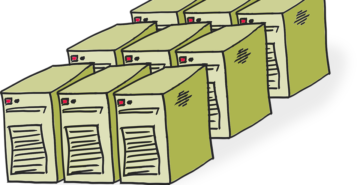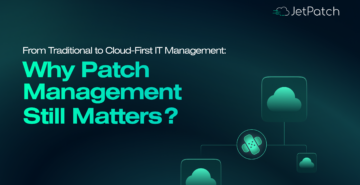Are you keeping up with today’s cybercriminals? These aren’t just kids hacking in from their parents’ garage–they’re vast, professional, and lethal criminal enterprises.
Hackers are getting smarter every day, tapping into the best of automation, AI/ML, and Dark Web collaborations. And they aim to bring down your business to get at that sweet, sweet payoff.
In 2019, the FBI received 467,361 hacking complaints with reported losses exceeding $3.5 billion. They also say that the number of incidents is increasing, with attacks growing ever more sophisticated.
Meanwhile, IT security operations has been thrown a number of curveballs, including regulatory compliance demands, budget cuts, a lack of skilled workers struggling to function in both cloud and on-premises environments, expanded digital connectivity, and a wider variety of endpoints, not to mention all the challenges of work from home (WFH).
Robust risk management programs need more and more resources at a time when you’re making do with less. How are you supposed to keep up? That’s exactly what SOAR is here to answer.
What Is SOAR?
SOAR, a term coined by Gartner in 2015, represents an integrated combination of three crucial cybersecurity sectors: security orchestration and automation, threat intelligence, and incident response.
According to the U.S. Government’s Cybersecurity & Infrastructure Security Agency (CISA)’s 2020-2024 Strategic Technology Roadmap, “SOAR technologies enable organizations to automate IT security actions–such as log gathering, quarantining a file, hashing a file, or running an analytic. Organizations can then link these actions as well as non-security-specific actions together to execute security processes.”
SOAR lets you synchronize systems and processes, automating whenever possible and streamlining repeatable processes, thus increasing security and eliminating risk. And by eliminating slower and error-prone human processes, according to a recent article in SecurityWeek, SOAR tools can introduce “intelligence-driven changes that can be confidently accomplished with limited human effort,” drastically reducing the time needed for threat detection and response.
SOAR solutions are quickly emerging in fields like threat intelligence, network forensics, incident management, compliance management, and workflow management. Applications include email security, EDR, NDR, and XDR. Combined with machine learning, this will create a powerful range of future tools.
While fewer than 5% of businesses today are using SOAR tools in their security operations, according to Gartner’s 2019 SOAR Market Guide, over 30% of businesses will be on-board by the end of 2022.
This is great for the future–but what are we supposed to do right now? The answer lies in embracing SOAR principles today.
3 Key SOAR Principles
The three components that make up SOAR include security orchestration and automation; security incident response, and a threat intelligence platform. Let’s explore these components one by one to mine some insights that can help us today.
-
Security Orchestration & Automation
Orchestration is a popular buzzword and refers to bringing together data from disparate tools to help provide you with bigger-picture insights. SOA helps define clear and efficient workflows, playbooks, and model processes, often by breaking down silos so teams can work more efficiently to identify and eliminate threats.
Automation makes teams work more effectively using resources they already have, especially when we add machine learning over time. SOA makes sure you can respond more quickly across a wide range of security components and tools.
Orchestration creates efficient processes and eliminates redundancies, while automation saves you work.
Insight: One of the ideal use cases for SOA is patching. Organizations handle hundreds of patches every single year, on a huge variety of platforms. This demands advanced orchestration and automation solutions.
2. Security Incident Response
SIR involves defining a coordinated, step-by-step response triggered by a security event: an attack (e.g., DoS), unauthorized access (identity theft and/or release of personally identifying information (PII)), malicious code (viruses/worms), or inappropriate usage.
The response includes predefined policies and procedures along a standardized timeline: detection, evaluation, response, recovery, resumption of operations, postmortem.
Insight: While security incidents must be dealt with immediately, the later phases ensure that all relevant vulnerabilities are addressed with patches, along with a review of your patching policy and tools so that the incident won’t re-occur. Rolling out updated patch management tools can also make this task simpler.
3. Threat Intelligence Platform
Most security teams use a messy hodgepodge of tools. With separate tools for network defense, incident response, threat analysis, and more, it’s tough keeping it all straight. Teams coordinate and share threat-data in the most old-fashioned ways: email, spreadsheets, or a ticketing system.
The innovation of TIP tools is that they provide a single pane of glass with insights into the organization’s entire security picture. This helps eliminate false alarms and lets you benefit from advanced threat intelligence, gathering data such as the sharing of exploits on the Dark Web to help predict which vulnerabilities are going to be attacked. They can also incorporate automation for some labor-intensive tasks.
Insight: Rather than trying to meet the impossible “patch everything all the time” standard, approaches like TIP use intelligence to get a clearer picture of true vulnerability.
Pulling It All Together
SOAR pulls all the above practices together in a very simple equation: SOA + SIR + TIP = SOAR.
Although many organizations disproportionately emphasize the “response” portion of this equation, SOAR as a whole is moving in the direction of the insights we’ve gleaned above:
- Addressing complex problems, such as patching, which demand advanced orchestration and automation.
- Dealing not only with security incidents in the moment, but rather, taking steps to ensure that they won’t recur.
- Embracing machine learning and intelligent solutions that adapt to the reality of the environment.
From an IT perspective, the SOAR future can’t get here soon enough: The arrival of tools that automate and orchestrate your entire security architecture, including firewalls, app security, intrusion prevention, and, of course, patch management.
Because the faster you can identify and address threats or breaches, the safer your organization will be.
A 2020 article about SOAR by AT&T states that “Combating machine-driven hacker threats requires being proactive by constantly updating and testing cybersecurity capabilities.” This includes new and growing threats like cloud-based attacks, which McAfee data shows rose 630% between January and April 2020.
Emerging cloud attacks use techniques like accessing high volumes of data from unrecognized locations; attempted logins from unusually distant sites, places that would be impossible for an employee to travel between in a given period of time; opportunistic attacks that “spray” cloud accounts with mass quantities of stolen credentials; and numerous attacks that take advantage of collaborative services like Microsoft 365.
This growth proves that we can’t afford to wait for SOAR.
Why Wait? Benefit from SOAR Best Practices Today
Business success depends on security in a vast majority of organizations, according to a 2020 AT&T report. And the proactive approach of vulnerability management, including remediation through patching, is the core of any comprehensive security program.
Looking at the insights of SOAR, you can derive best practices to implement right away–especially when it comes to intelligent and automated security tools.
JetPatch is one tool that works hand in hand with other components of your security environment, ending the hassle of vulnerability remediation. JetPatch streamlines and simplifies security operations, giving you many of the best practices of SOAR in an easy-to-use, off-the-shelf solution:
- Unified overview of your org and its assets in a single pane of glass
- Reduced downtime with intelligent remediation and patching automation
- Simplified management of remote users with JetPatch Off-Grid Patching
SOAR is coming–and it’s going to be great. But for today’s vulnerabilities, you need tools that are available and affordable today. JetPatch makes it simple to get started, giving you a tight grip on security and letting your business truly soar.



